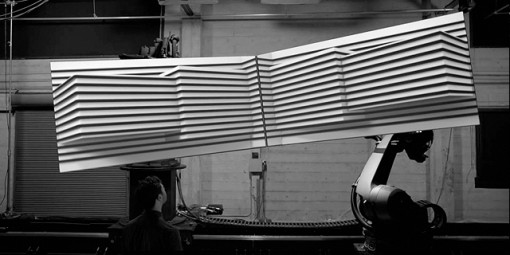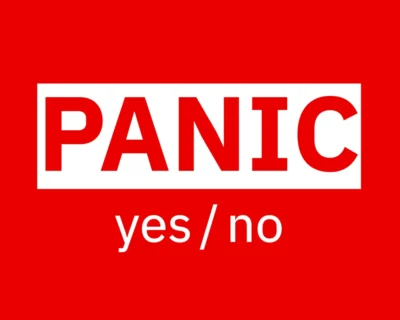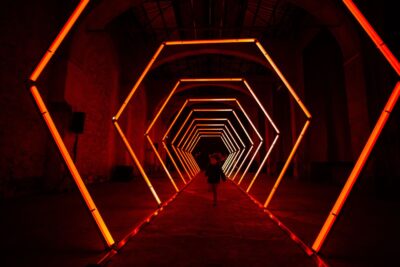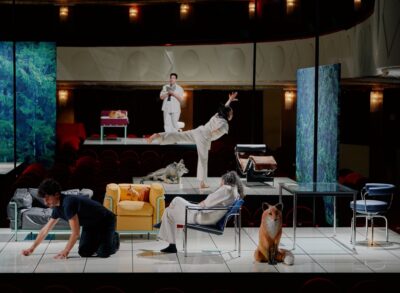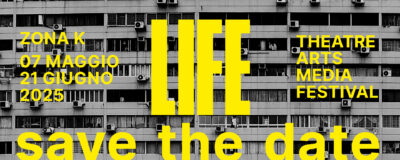Box explores the synthesis of real and digital space through projection-mapping on moving surfaces. The short film documents a live performance, captured entirely in camera. Bot & Dolly produced this work to serve as both an artistic statement and technical demonstration. It is the culmination of multiple technologies, including large scale robotics, projection mapping, and software engineering. We believe this methodology has tremendous potential to radically transform theatrical presentations, and define new genres of expression.
As the performer engages with a morphing set, unfathomable shapes, graphics and animations are revealed. As the video continues, we’re eventually shown that it is in fact, a robotic mechanism hidden behind every illusion.
This behind the scenes film contains interviews with GMunk (Bradley G Munkowitz), BOX’s Design Director and Tarik Abdel-Gawad, BOX’s Creative Director together with behind scenes footage from the making of BOX.
Interview with Bot & Dolly’s Tarik Abdel Gawad, Creative and Technical director on “Box”
Can you please confirm for our readers that none of the box visuals were comped in post?
Yes, this is a capture of a physical performance. The visuals are not added in post.
Where did the idea for this project come from? Was it commissioned?
Box is an internal project that grew naturally out the the intersection of art and technology at Bot & Dolly. We have a great interdisciplinary team of designers and engineers that made the project possible.
From the start, the exploration of classical magic fit with our creative process. Magicians have a long history of mixing technology with performance and the categories of classical magic were perfect inspiration for the geometric illusions in Box.

Can you tell us a little more about the robots? What are those robots normally used for?
The spec sheets on the Bot & Dolly website are the best source of information on our robots.
IRIS Spec Sheet
SCOUT Spec Sheet
How did you work out the choreography between the performer and the robots?
Working out the choreography was a process of rehearsal and iteration. For mainly practical reasons it was actually me performing. I had the most experience operating the robots, and since this was an internal project, rehearsals often took place at night. Each robot weighs around one and a half tons so it takes awhile to get comfortable moving around them, and safety is important.
How did you track the movement of the surfaces by the projector? Was it all preprogrammed based on the robots’ movements?
The projectors and robots are all calibrated within the same coordinate frame. Bot & Dolly’s software, BDMove, makes its possible to synchronize graphic content with robotic motion.
What was the design process for this like? Where did you start? And did you need to test and iterate a bit before getting it down?
We would start with a category of classical magic and begin exploring limited narratives made up of only abstract geometric shapes and a single performer. During the animation phase we relied on quick hand drawings and moving blocks around a table to communicate ideas because it was nearly impossible to describe something just with words.
Choosing the right geometry was very important to creating the illusion of depth, and directly affects the robotic motion. The primary illusion is created by transforming the geometry of the physical 4’ by 8’ canvas mounted to the robotic arm, through projection.
In the first section, “Transformation”, we extrude the canvas into a cube. Later on we combine two canvases to form a larger hinging shape, which in return affects the robotic animation. We tried to make each section build upon the last, and we were always learning something based on what was just completed. By the end, we ended up with a very complex environment, the performer is inside of the projected volume, there are holes in the floor and line drawing on the back wall.
What was the most challenging aspect of the job?
The difficult part is that you don’t know exactly how something will turn out until you’ve seen it projected in the space. Even then it changes with the environment’s lighting, which is also synchronized with the graphic content and robotic movement.
Many software applications were used on this project in conjunction with BDMove. It’s a very collaborative process with a lot of creative control, so it takes a lot of time and iteration to get to the point where everyone is happy.
(by http://motionographer.com/2013/10/01/bot-dolly-box-interview-and-behind-the-scenes/)

